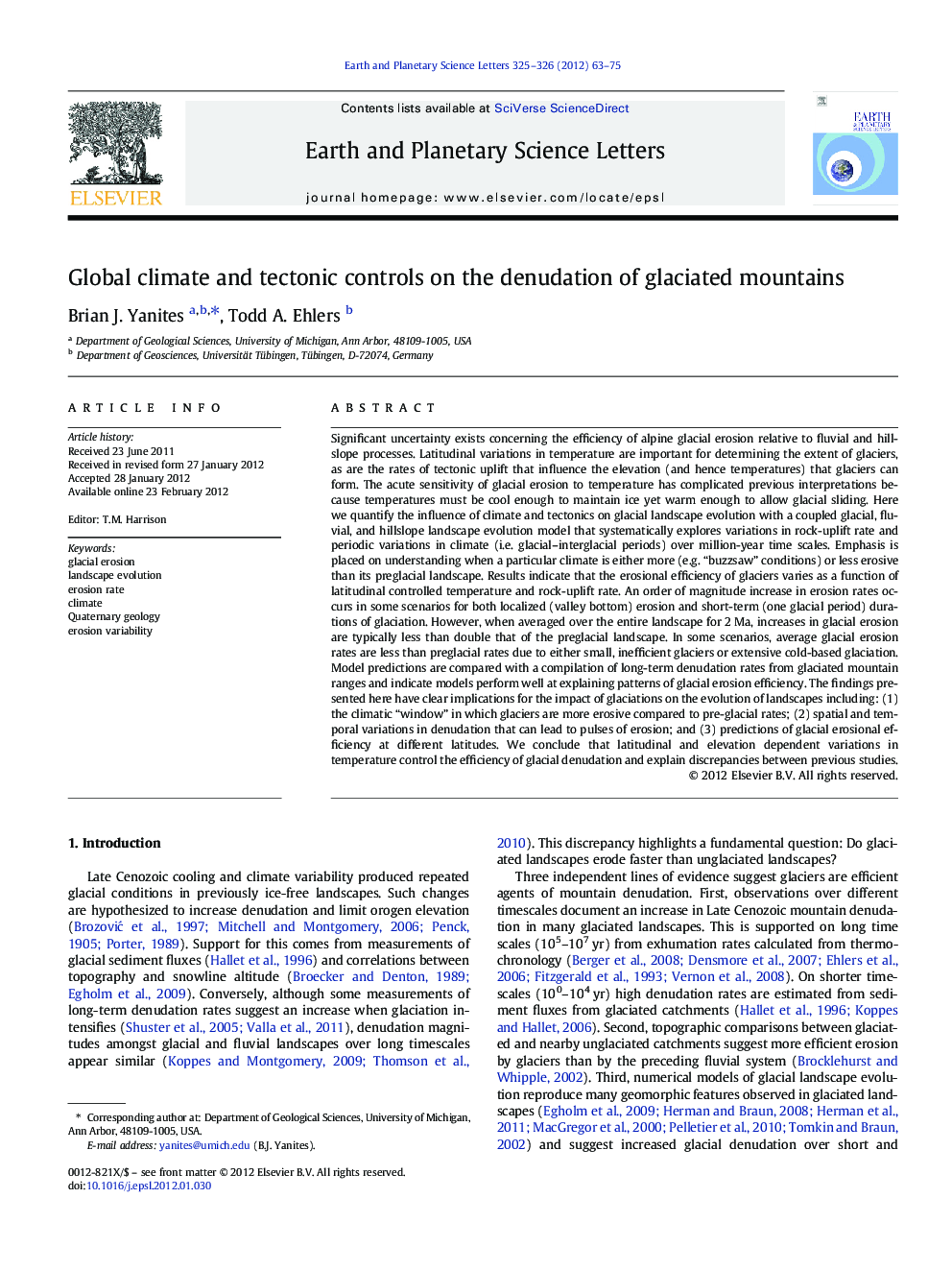| کد مقاله | کد نشریه | سال انتشار | مقاله انگلیسی | نسخه تمام متن |
|---|---|---|---|---|
| 6430670 | 1634808 | 2012 | 13 صفحه PDF | دانلود رایگان |

Significant uncertainty exists concerning the efficiency of alpine glacial erosion relative to fluvial and hillslope processes. Latitudinal variations in temperature are important for determining the extent of glaciers, as are the rates of tectonic uplift that influence the elevation (and hence temperatures) that glaciers can form. The acute sensitivity of glacial erosion to temperature has complicated previous interpretations because temperatures must be cool enough to maintain ice yet warm enough to allow glacial sliding. Here we quantify the influence of climate and tectonics on glacial landscape evolution with a coupled glacial, fluvial, and hillslope landscape evolution model that systematically explores variations in rock-uplift rate and periodic variations in climate (i.e. glacial-interglacial periods) over million-year time scales. Emphasis is placed on understanding when a particular climate is either more (e.g. “buzzsaw” conditions) or less erosive than its preglacial landscape. Results indicate that the erosional efficiency of glaciers varies as a function of latitudinal controlled temperature and rock-uplift rate. An order of magnitude increase in erosion rates occurs in some scenarios for both localized (valley bottom) erosion and short-term (one glacial period) durations of glaciation. However, when averaged over the entire landscape for 2Â Ma, increases in glacial erosion are typically less than double that of the preglacial landscape. In some scenarios, average glacial erosion rates are less than preglacial rates due to either small, inefficient glaciers or extensive cold-based glaciation. Model predictions are compared with a compilation of long-term denudation rates from glaciated mountain ranges and indicate models perform well at explaining patterns of glacial erosion efficiency. The findings presented here have clear implications for the impact of glaciations on the evolution of landscapes including: (1) the climatic “window” in which glaciers are more erosive compared to pre-glacial rates; (2) spatial and temporal variations in denudation that can lead to pulses of erosion; and (3) predictions of glacial erosional efficiency at different latitudes. We conclude that latitudinal and elevation dependent variations in temperature control the efficiency of glacial denudation and explain discrepancies between previous studies.
⺠We systematically model the influence of climate on glacial landscape evolution. ⺠Average erosion rates over 2 Ma of glacial erosion is tracked. ⺠We quantify the climatic window in which glaciers are more erosive than rivers. ⺠Spatial and temporal variations in denudation lead to pulses of erosion.
Journal: Earth and Planetary Science Letters - Volumes 325â326, 1 April 2012, Pages 63-75